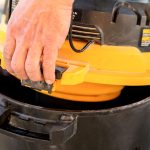Boat salvage and recovery services are essential in situations where a boat has been damaged or sunk due to an accident, natural disaster, or other unforeseen circumstances. These services provide a means for boat owners to recover their vessel and prevent further damage to the environment. In this article, we will discuss the importance of fort myers boat salvage and recovery services and the steps involved in the process.
Why Are Boat Salvage and Recovery Services Important?
Boats can become damaged or sunk for a variety of reasons, including storms, collisions, and mechanical failure. When this happens, it is essential to have a plan in place for recovery and salvage. Boat salvage and recovery services provide a means for boat owners to recover their vessel and prevent further damage to the environment.
In addition to preventing environmental damage, boat salvage and recovery services can also help to minimize financial losses. Boats are often expensive investments, and the cost of repairing or replacing a damaged or sunk vessel can be substantial. Salvage and recovery services can help to minimize these costs by salvaging as much of the vessel as possible and minimizing damage to the surrounding environment.
Steps Involved in Boat Salvage and Recovery
Assess the Situation
The first step in the boat salvage and recovery process is to assess the situation. This involves determining the cause of the damage or sinking, the location of the vessel, and the extent of the damage. The salvage team will also need to consider factors such as weather conditions, water depth, and any environmental concerns.
Develop a Salvage Plan
Once the situation has been assessed, the salvage team will develop a salvage plan. This plan will outline the steps that need to be taken to recover the vessel and prevent further damage to the environment. The plan will include details such as the equipment needed, the personnel required, and the timeline for completing the salvage operation.
Prepare for the Salvage Operation
The next step in the process is to prepare for the salvage operation. This may involve mobilizing equipment such as cranes, divers, and underwater cameras. The salvage team will also need to obtain any necessary permits and coordinate with local authorities to ensure that the salvage operation is conducted safely and legally.
Recover the Vessel
Once all preparations have been made, the salvage team will begin the process of recovering the vessel. This may involve using cranes or other lifting equipment to raise the vessel from the water. Divers may also be used to attach lifting lines to the vessel or to conduct repairs underwater.
Salvage any Recoverable Items
After the vessel has been recovered, the salvage team will salvage any items that are recoverable. This may include equipment, personal belongings, and any salvageable parts of the vessel. The salvage team will also work to minimize any environmental damage caused by the salvage operation.
Dispose of any Unsalvageable Items
Finally, any unsalvageable items will need to be disposed of properly. This may include hazardous materials, damaged parts of the vessel, or other debris. The salvage team will work to ensure that all materials are disposed of safely and in compliance with local regulations.
Choosing a Boat Salvage and Recovery Service
When choosing a boat salvage and recovery service, there are several factors to consider. These include the company’s experience and expertise, the equipment they use, and their response time. It is also important to ensure that the company has the necessary permits and insurance to conduct salvage operations safely and legally.
In addition to these factors, it is important to choose a company that prioritizes environmental protection. Boat salvage and recovery operations can have a significant impact on the environment, and it is essential to choose a company that has a proven track record of minimizing environmental damage.


